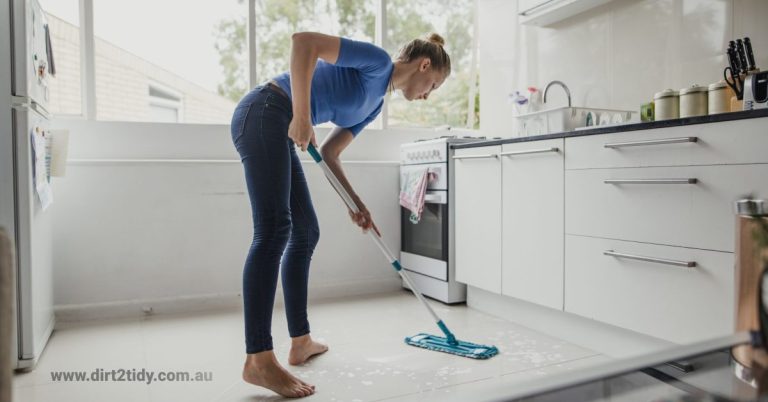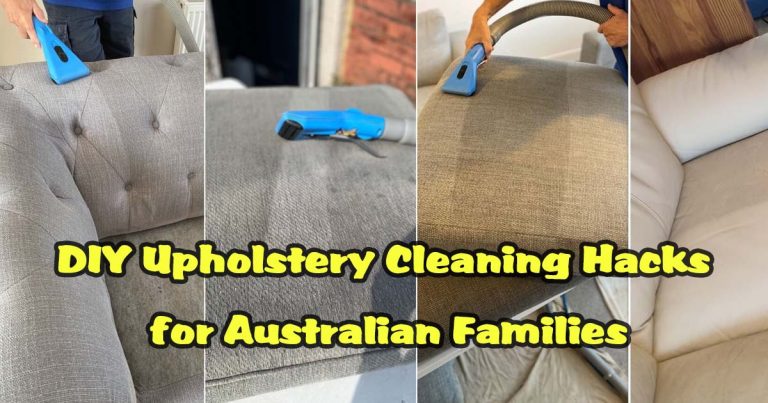Table of Contents
To clean fireplace glass effectively, use one of the following methods:
- Make a natural paste using fireplace ash mixed with a bit of water and vinegar
- Spray a solution of equal parts vinegar and water
- Use a specially formulated commercial fireplace glass cleaner
Avoid using cleaners that contain ammonia, as they can harm the glass surface. These approaches help remove soot, smoke stains, and residue while keeping the glass clear and safe.
There’s nothing quite like the cosy glow of a fire on a chilly evening but dirty fireplace glass can quickly spoil the view. I know how frustrating it is when soot and streaks block the flames and make your living room feel less inviting. Regular window cleaning, along with keeping the fireplace glass clear, can instantly brighten up the space and restore its charm.

Over the years I’ve found that a few simple steps can make all the difference. With the right approach you can enjoy a crystal-clear view of your fire and keep your fireplace looking its best all season long. Let me show you how easy it is to get that glass sparkling again.
If you notice any cracks, chips, or damage during cleaning, speak with the tradesman or glass specialist / glazier who installed the fireplace glass. Depending on where you are located, there are many glaziers who specialise in fireplace glass replacement and repairs. A few stand outs we found online are Pure Glass SA for those of you in South Australia, Bradney Glass for those of you in NSW. Damaged glass can compromise both safety and performance, so prompt inspection or replacement is essential.
Understanding The Importance Of Clean Fireplace Glass
Clean fireplace glass maintains a clear view of the flames, enhancing the fireplace’s aesthetic appeal. Soot build-up reduces light transmission by up to 60%, according to Pilkington Glass. Dirty glass introduces lingering odours and airborne particles into the room; Health and Safety Executive guidelines note that poor air quality may worsen respiratory symptoms. Properly cleaned glass helps prevent etching or permanent stains caused by creosote, minerals or hard water, which can degrade glass integrity over time. Beyond the visual impact, keeping fireplace glass clean is essential for both health and safety. Soot and residue not only obscure the view but can also contribute to indoor air pollution, making the environment less pleasant and potentially aggravating allergies or respiratory issues. Regular maintenance lessens these risks and keeps your fireplace functioning at its best.
A well-maintained fireplace glass contributes to efficient burning. Clean glass supports even heat radiation and minimises residue accumulation on other interior surfaces, such as bricks or metal doors. Regular cleaning also highlights any damage or cracks, allowing prompt repairs that improve overall safety. Clear fireplace glass ensures the living space remains a focal point, combining visual enjoyment with practical health and maintenance benefits. In short, clean fireplace glass isn’t just about looks—it’s about enjoying the warmth, beauty, and safety your fireplace provides all season long.
Tools And Materials Needed
Cleaning fireplace glass needs specific tools and materials to remove soot and residue without causing scratches. I use the following items to achieve streak-free clarity:
- Microfibre cloths: I use lint-free cloths to wipe and polish glass without leaving scratches or fibres.
- Soft-bristled brush: I loosen soot and ash with a small brush before applying liquid cleaners.
- Spray bottle with water: I dampen the glass or rinse away cleaners using a spray bottle.
- Fireplace glass cleaner: I rely on specialised cleaners labelled as safe for ceramic and tempered glass, avoiding ammonia-based products that can damage seals.
- White vinegar: I sometimes choose diluted vinegar as an alternative for light soot or water spots.
- Bicarbonate of soda: I mix this with water as a mild abrasive for stubborn stains.
- For an effective, budget-friendly option, I also make use of the ash already inside the fireplace. Mixing a small amount of fireplace ash with water and a splash of white vinegar forms a gentle paste. I apply this mixture to the glass using a microfibre cloth, scrubbing in a circular motion to lift stubborn deposits. Once the grime loosens, I wipe the area clean with another damp cloth—sometimes dipping it in the water-vinegar mix for extra clarity. A final pass with a glass cleaner helps ensure a streak-free finish.
- These natural alternatives are safe for glass and can be surprisingly effective, especially when dealing with tough soot or creosote build-up.
- Protective gloves: I wear gloves to shield my hands from sharp edges and chemical exposure.
- Dust sheet or newspaper: I cover the hearth below the door to catch any drips or debris.
- Disposable paper towels: I use these for messier residue or to discard initial soot deposits safely.
The table below summarises these tools and materials for cleaning fireplace glass:
| Tool / Material | Purpose |
| Microfibre cloths | Polishing, streak-free wiping |
| Soft-bristled brush | Loosening soot and ash |
| Spray bottle with water | Damping and rinsing |
| Fireplace glass cleaner | Removing residue and stains |
| White vinegar | Tackling light soot and spots |
| Bicarbonate of soda | Treating stubborn marks |
| Protective gloves | Protecting hands |
| Dust sheet/newspaper | Catching debris and drips |
| Disposable paper towels | Removing heavy residue and discarding waste |
I keep all tools and materials ready to support each step in the fireplace glass cleaning process.

Step-By-Step Guide On How To Clean Fireplace Glass
I follow a methodical process when removing soot from fireplace glass to ensure it stays streak-free, clear and free from scratches. Each stage in my routine targets specific types of debris or residue for thorough maintenance.
Preparing The Area For Cleaning
I always let the fireplace and glass cool completely before starting cleaning to prevent cracks and burns. I lay down a dust sheet or several sheets of newspaper under the glass panel, catching falling soot and debris. I put on protective gloves to shield my skin from chemicals and soot. I carefully remove any decorative items or loose pieces from the hearth so nothing obstructs the cleaning area.
Removing Soot And Stains
I use a soft-bristled brush to sweep loose ash and soot from the glass surface, making sure not to scratch it. I gently dampen a microfibre cloth with water or diluted white vinegar and wipe the remaining soot with straight, even strokes. I apply a fireplace glass cleaner if visible streaks or oily marks remain, letting it sit for the time stated on the label before wiping clean. I use only circular or vertical motions, depending on the cleaner’s directions, to minimise streaking.
Mixing an Ash-Based Cleaning Paste
For stubborn grime, I sometimes create a homemade cleaning paste using simple ingredients from my fireplace. I scoop a small amount of cool, fine ash from inside the firebox, then blend it with a splash of water and a dash of white vinegar. I add just enough liquid until the mixture forms a loose, spreadable paste—thick enough to cling to the glass without dripping. This slightly gritty mixture gently lifts residue, harnessing ash’s mild abrasiveness without risk of scratching. I apply the paste using a soft cloth, always taking care to avoid coarse or chunky ash which might damage the glass surface.
Dealing With Stubborn Residue
I apply a bicarbonate of soda paste to soot or tar patches that resist lighter cleaners, using a soft cloth. I let the paste work for five minutes before gently scrubbing in a circular motion. I wipe away residue with a clean damp microfibre cloth. If residue persists, I repeat the paste application, making sure to avoid excessive pressure which could scratch the glass.
Using Fireplace Ash For Cleaning Glass
Leftover ash from your fireplace can actually be a surprisingly effective cleaning agent for the glass door. After your fire has burned out and the ash has cooled completely, I scoop a small amount into a bowl. Then, I mix it with a few drops of water and a splash of white vinegar until it forms a thick paste—no need for exact measurements here.
With the paste ready, I dip a microfibre cloth into the mixture and gently rub it onto the stained areas of the glass in a circular motion. The mild abrasiveness of the ash works to lift grime and soot without scratching the surface. I wipe away the paste using a clean, damp cloth (preferably another microfibre one) to remove any remaining residue.
For extra clarity, I finish with a quick pass of my favourite fireplace glass cleaner, making sure all streaks are gone. Using fireplace ash is not only economical but also makes good use of the byproducts of your fire—keeping cleaning as sustainable as it is effective.
Finishing Touches And Drying
I dry the fireplace glass with a fresh, lint-free cloth for a streak-free finish. I polish the surface with a dry microfibre cloth to restore complete clarity and shine. I inspect the glass edge and corners for leftover streaks, cleaning any missed spots. I ensure all cleaning products and debris are removed from the area before restoring decorative pieces to the fireplace.
Tips For Maintaining Clean Fireplace Glass
- Wipe after each use
I use a dry microfibre cloth to wipe fireplace glass when it cools after each fire. Removing loose soot immediately stops it bonding to the surface.
- Check seals regularly
I inspect the door and gasket seals once a month. Intact, clean seals prevent smoke leakage that causes rapid soot build-up on glass.
- Burn seasoned wood
I burn hardwoods like oak or ash seasoned for at least 12 months. Drier wood produces less smoke and soot, keeping the glass clear longer.
- Avoid burning rubbish
I never burn household waste, glossy paper or wet logs. These materials release chemicals and extra smoke that quickly coat fireplace glass.
- Ventilate the firebox
I open the airflow vents fully during startup and burning. Good air circulation ensures fuel burns hotter, reducing residue on the glass.
- Use an ash pan
I fit an ash pan below the grate to catch falling ash. This stops excess ash landing on the glass and hardening into stubborn deposits.
- Clean regularly
I clean the glass every one to two weeks, or sooner if soot appears. Frequent, gentle cleaning extends glass clarity and structural life.
Common Mistakes To Avoid
Using Abrasive Tools
I avoid steel wool, rough scourers or razor blades when cleaning fireplace glass, since these scratch the surface and cause permanent clouding.
Applying Cleaners on Hot Glass
I always check the glass has cooled before cleaning, because applying spray, water or paste while the surface’s still hot leads to cracks or smears.

Skipping Protective Coverings
I place dust sheets or newspaper under the fireplace door before starting, as cleaning without protection often causes debris or stains on flooring.
Rinsing Inadequately
I thoroughly wipe off all cleaning residues, because leftover cleaner attracts new soot and leaves visible streaks.
Neglecting Surrounding Seals
I inspect rubber and metal seals during cleaning, since harsh products degrade these materials and cause future smoke leakage.
Using Household Glass Sprays
I skip generic glass cleaners like window sprays, since ammonia or vinegar alone can damage fireplace glass coatings over time.
Rushing the Drying Process
I take time to polish the glass with a dry microfibre cloth after cleaning, because leaving the surface damp results in spots or watermarks.
Forgetting Regular Maintenance
I never wait for heavy soot build-up before cleaning, as infrequent cleaning makes residue much tougher to remove and risks permanent staining.
These practices ensure I protect the fireplace glass while maintaining clear, safe viewing year-round.
Conclusion
Keeping my fireplace glass clean has made a real difference to the look and feel of my living room. I’ve found that a little regular care not only keeps the glass sparkling but also helps me spot any issues before they become bigger problems.
By sticking to a simple routine and using the right tools I can enjoy a clear view of the flames and a safer more inviting home. Clean fireplace glass really does make every fire feel that bit more special.
Stay on Top of Cleaning Without the Stress
With Dirt2Tidy, regular cleaning is simple, consistent, and worry-free. Let us keep your home looking its best—week after week.
✅ Recurring cleaning options to match your schedule
✅ Professional and reliable team
✅ Great for families, busy workers, and seniors
👉 Start your regular cleaning service today!
📞 1300 789 178 | 🌐 Request a Quote Now
✨ Enjoy a home that’s always clean and welcoming.





